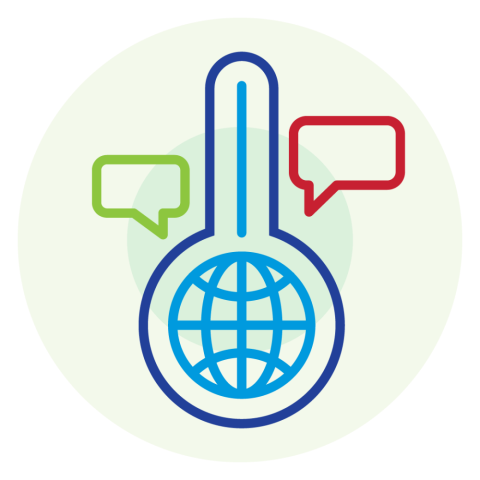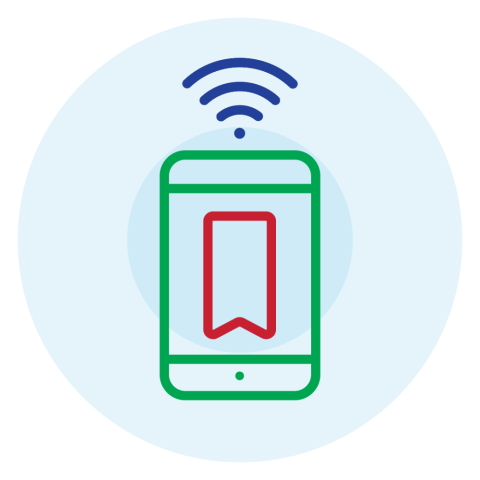The relationship between technology and education
The 2023 Global Education Monitoring Report will focus on technology and education. Both delivery and content of education are affected by rapid changes in how technology affects everyday lives, in the private and public sphere, along social, political and economic dimensions. These effects have accelerated as a result of COVID-19 and the associated school closures, which generalized the use of online learning solutions.
Questions will focus on five areas of technology:
-
as an education input;
-
as a means of education delivery;
-
as a skill;
-
as a tool for education planning and policy-making; and
-
as a social and cultural context affecting education.
More information on each of those pillars is below.
Technology as an education input
Computers (or other devices) and internet connectivity at school (or at home) have become essential inputs in the education process. Other technologies also improve learning environments. Ensuring the provision, operation and maintenance of technology infrastructure in education requires considerable capital investment and recurrent expenditure. Relevant questions include the following:
-
How is technology infrastructure allocated within and between countries?
-
What do we know about the level and types of use of technology infrastructure?
-
What public policies support the provision of technology infrastructure and what are the costs? How is procurement organized and what decisions do governments need to take?
-
What are the effects of these policies on equity, efficiency and effectiveness of such technology infrastructure?
-
How can access to technology infrastructure be improved for poorer countries?
Technology as a means of education delivery
Teaching and learning – and the management of both processes – increasingly rely on education technology. Relevant questions include the following:
-
Which technologies have a positive impact on student learning outcomes? How can policy makers and practitioners access reliable evidence on effective technologies?
-
How does technology transform classrooms and relations between teachers and students?
-
How can distance education, including of teachers, be most effectively delivered?
-
How is the acquisition of some skills changing as a result of technology, especially in facilitating a shift from retrieval of facts to the development of other skills?
-
How can technology help the attainment and achievement of disadvantaged populations, for instance learners with disabilities or affected by conflict?
-
How can technology-based personalised teaching best complement classroom teaching? What is the role of adaptive learning programmes?
-
How can tools such as the internet or open education resources aid self-directed, life-long learning?
-
How can teachers be prepared to use technology not only to teach but also to organise instruction, to cooperate with colleagues, students, parents and communities, and to receive support?
-
How is technology being used to assess learning progression and achievement?
-
What role is there for artificial intelligence to support feedback, grading and course improvement?
-
What technologies are being used for surveillance and what challenges do they pose?
-
How do all these issues manifest themselves at different education levels, from preprimary to technical and vocational and university education?
Technology as a skill
Education systems are being called upon to support learners at various levels to acquire digital and other technology skills.
Relevant questions include the following:
-
What digital competencies are most relevant for life and work?
-
What are the demographics of the ‘digital divide’ within and between countries?
-
How are curricula, textbooks and assessments being organized to build digital competencies?
-
How can teachers be prepared to teach digital competencies and update their own skills?
-
How do education systems and institutions identify technology skills needed in societies and economies – and how do they respond and adapt their programmes to such needs?
-
How do state and non-state providers respond to such needs?
-
How are such technology skills certified?
Technology as a tool for education planning and policy-making
Governments can use technology tools to improve the efficiency and effectiveness of their management of the education system. Relevant questions include the following:
-
How can technology assist education management information systems and data collection?
-
How can technology support the use of data in policy decisions?
-
What challenges appear for data privacy and protection – and how are they addressed?
-
How is technology being used to ensure integrity and fight corrupt practices, such as plagiarism?
-
How is technology being used to improve the management of the education system, from payments of salaries to maintenance of buildings?
Technology as a social and cultural context affecting education
Technology is affecting all spheres of life, expanding opportunities for connection and access to information but also posing grave risks to equality and social cohesion. Relevant questions include the following:
-
How does addiction to games affect students and how can it be mitigated?
-
How can cyber-bullying be prevented?
-
What can education do to fight the incidence of misinformation or polarization?
-
To what extent can education help build a sense of community and prevent social isolation?







